Economic Development: August 2025 UPSC Current Affairs | Indian Economy for UPSC CSE PDF Download
GS3/Economy
RBI’s Monetary Policy Review - Balancing Growth Optimism with Inflationary Caution
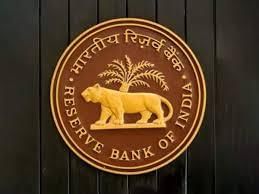
Why in News?
This article discusses the outcomes of the Reserve Bank of India's (RBI) recent Monetary Policy Committee (MPC) meeting, focusing on its evaluation of inflation trends, GDP growth forecasts, external trade risks, and the anticipated policy direction.
Key Takeaways
- The RBI maintained the repo rate at its current level, adopting a neutral stance.
- Inflation is projected to see an upward trend, with CPI inflation expected to exceed 4% in 2026.
- The RBI has already implemented a total policy rate reduction of 100 basis points since February 2025.
Additional Details
- Inflation Outlook: CPI inflation dropped to around 2% in June 2025 and is projected to rise to 2.5% for the following quarters. The FY26 CPI inflation forecast has been revised down to 3.1% due to statistical effects and vegetable price deflation.
- Vegetable Price Volatility: Following a high inflation rate of 27% in 2024, vegetable price deflation has occurred, averaging -15% recently. The sub-index for vegetables (6% weight in CPI) remains very volatile, with CPI inflation (excluding vegetables) stable between 3-4% during FY25 and Q1 FY26.
- Future Projections: An anticipated reversal of the base effect may cause CPI inflation to surpass 4% in Q4 FY26, with FY27 CPI inflation potentially averaging above 4.5%.
- GDP Outlook: The RBI has retained its GDP growth projection for FY26 at 6.5%, citing factors like interest rate cuts and strong agricultural output.
- Consumption and Employment Concerns: Urban consumption is sluggish due to low income growth and a slowdown in hiring, particularly within the IT sector, where top firms are experiencing stagnant employment.
- Investment Trends: Public capital expenditure saw a significant increase of 52% in Q1 FY26, although private sector investment remains cautious due to economic uncertainties.
- External Risks: Challenges such as US reciprocal tariffs pose risks to India's external sector, with merchandise exports expected to contract while services exports remain strong.
- Current Account and Forex Reserves: India’s current account deficit is manageable at 0.9% of GDP in FY26, with forex reserves comfortably at $689 billion, covering 11 months of imports.
- Policy Outlook: With low real interest rates (around 1%) and ample liquidity, the RBI is likely to pause further rate cuts unless there is a significant downturn due to external shocks.
The RBI’s cautious yet optimistic approach showcases its understanding of the dynamic macroeconomic environment. Ensuring sustained domestic demand, strategic policy adjustments, and vigilance against inflation and external risks are essential for maintaining economic stability in FY26 and beyond.
GS3/Economy
India’s S&P Upgrade: Drivers and the Road Ahead

Why in News?
Recently, S&P Global Ratings upgraded India’s sovereign rating from BBB- to BBB, marking the country’s first upgrade in nearly two decades. This development is significant due to the long hiatus and its extensive implications for India’s economic position, investor confidence, and global credibility.
Key Takeaways
- India’s sovereign rating has improved, reflecting enhanced economic fundamentals.
- The upgrade is expected to lower borrowing costs and improve access to global capital markets.
- India's government has actively pursued higher ratings from global agencies for better economic recognition.
Additional Details
- S&P Global: A leading international credit rating agency that evaluates the creditworthiness of governments and corporations, providing independent assessments of financial risk.
- Importance of Credit Ratings: Credit ratings gauge a country's ability to repay borrowed funds, influencing borrowing costs and investor confidence.
- India’s Economic Reforms: The rating upgrade is supported by improvements in fiscal discipline and economic growth, with efforts to reduce the fiscal deficit from 9.2% of GDP in 2020-21 to a projected 4.4% by 2025-26.
- Inflation Management: S&P praised India’s management of inflation, with the headline rate falling to 1.55% in July 2025, enhancing investor confidence.
- Global Standing: India’s new rating places it alongside countries like Greece and Mexico, indicating that while it has made progress, there are still challenges ahead to reach higher ratings.
The upgrade signals improved financial credibility for India, with immediate benefits like lower borrowing costs and a stronger rupee. However, achieving a further upgrade will require addressing the structural fiscal deficit, which poses a significant challenge in the coming years.
GS3/Economy
GST Reforms to Unlock Long-Term Revenue Gains for India
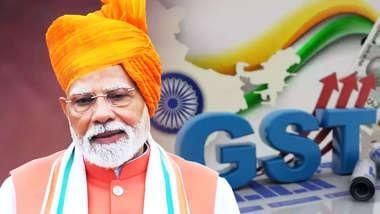
Why in News?
S&P Global Ratings has pointed out that the proposed two-tier Goods and Services Tax (GST) structure could reduce the effective taxation rate while enhancing long-term fiscal revenues for India. The central government is preparing to discuss this proposal with states in an upcoming meeting, aiming to simplify GST by reducing the existing slabs to just 5% and 18%, along with a special 40% rate for select luxury or sin goods. This reform is anticipated to streamline compliance, reduce complexity, and potentially boost government revenues over time, although the short-term impact on collections and affordability is still uncertain.
Key Takeaways
- The proposed GST reform aims to transition from the current four-rate system to two main slabs, plus a special rate for sin goods.
- The reform is expected to be implemented by the end of 2025, simplifying compliance and reducing indirect tax distortions.
- S&P Global Ratings supports the reform, suggesting it will not harm fiscal revenues despite a potential reduction in tax rates.
Additional Details
- Proposed Two-Slab System: The central government intends to move from the current GST structure of four rates (5%, 12%, 18%, and 28%) to a simplified two-slab system. This change is expected to decrease classification disputes and litigation, as well as eliminate duty inversion.
- Declining Effective GST Rates: Since its introduction in 2017, the weighted average GST rate has decreased from 14.4% to 11.6%, according to an RBI study from 2019. This trend is likely to continue under the new structure.
- S&P emphasizes that while tax rates may be lower, the simplicity of implementation and better accounting practices could lead to improved revenue collection in the long run.
- Despite potential revenue losses for state governments estimated at ₹7,000-9,000 crore annually, these losses may be counterbalanced by stronger GDP growth, which would increase both direct and indirect tax revenues.
In summary, the proposed GST reforms are positioned as a strategic move to simplify the tax structure, enhance compliance, and ultimately support the fiscal health of the government. While challenges may arise in the short term, the long-term outlook suggests potential for increased revenue generation and economic stability.
GS3/Economy
PM Modi’s 12th Independence Day Speech - A Roadmap to Viksit Bharat
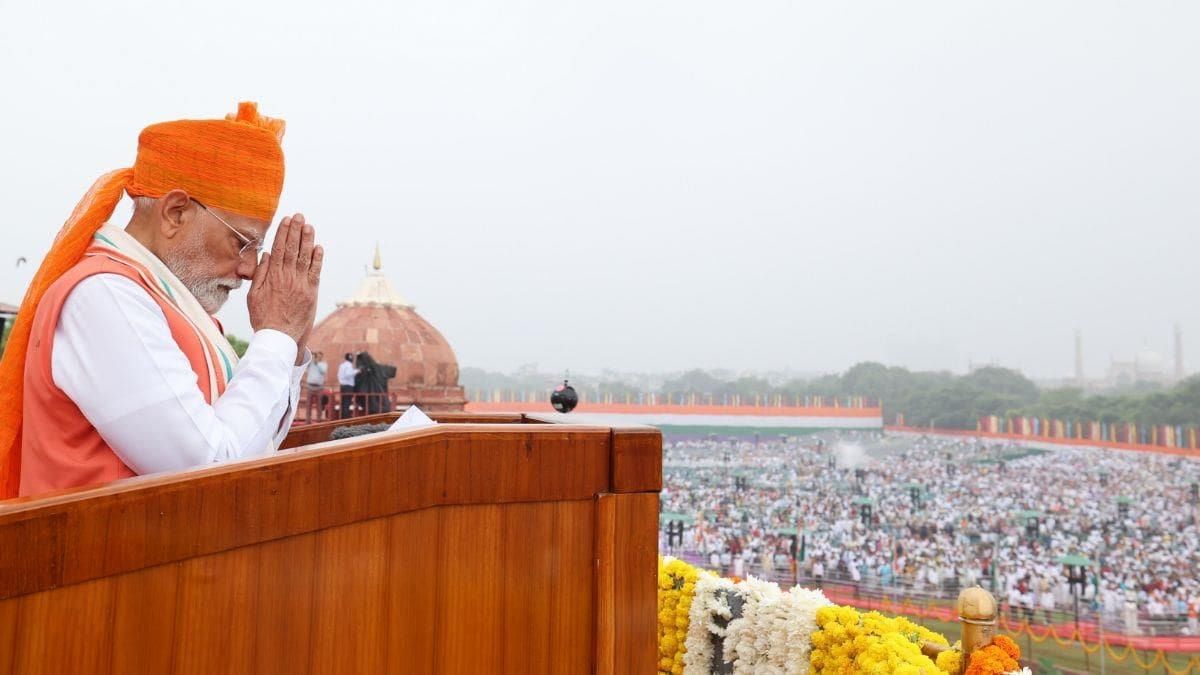
Why in News?
On August 15, Prime Minister (PM) Narendra Modi delivered his 12th Independence Day speech from the Red Fort. This address was notable for its visionary scope, bold reforms, and a long-term roadmap aimed at transforming India into a Viksit Bharat by 2047. The focus areas included next-generation reforms in the digital economy, energy security, national security, healthcare, taxation, and employment generation.
Key Takeaways
- Digital Sovereignty: Emphasis on India's digital leadership through initiatives like the Unified Payment Interface (UPI).
- Energy Security: Reduction of "No-Go" zones for hydrocarbon exploration and the launch of the National Deepwater Exploration Mission.
- Healthcare Innovation: India aims to lead the world in biopharma innovations and vaccine production.
- Tax Reforms: Introduction of a new Income Tax Bill and GST 2.0 to simplify compliance.
- Employment Generation: Launch of the PM Viksit Bharat Rozgar Yojana to empower youth.
Additional Details
- Digital India Stack: The UPI system accounts for 50% of global real-time digital transactions, showcasing India's digital prowess.
- Energy Exploration Initiatives: The National Deepwater Exploration Mission aims to unlock significant oil and gas reserves through innovative drilling techniques.
- National Critical Minerals Mission: India is exploring over 1,200 sites for essential minerals like lithium and cobalt, ensuring independence in technology production.
- Healthcare Achievements: India is recognized as the "pharmacy of the world," producing 60% of global vaccines.
- New Income Tax Bill: This bill simplifies the tax structure, reducing complexity by abolishing redundant sections.
- Employment Initiatives: The PM Viksit Bharat Rozgar Yojana aims to create jobs for approximately 3.5 crore young Indians.
The roadmap outlined in the Independence Day speech signifies India's commitment to transition from an ancient civilization to a modern power by integrating its rich heritage with progressive reforms. The goal is to achieve Viksit Bharat by 2047, positioning India as a technological, economic, and strategic powerhouse on the global stage.
GS3/Economy
India Semiconductor Mission (ISM)
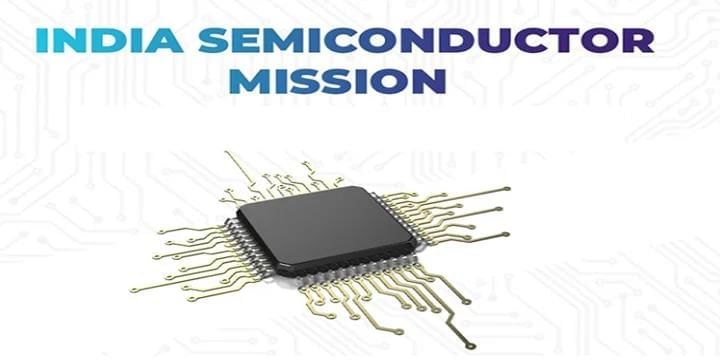
Why in News?
The Union Cabinet has recently approved four new projects under the India Semiconductor Mission (ISM), reinforcing India's commitment to establishing a robust semiconductor and display manufacturing ecosystem.
Key Takeaways
- The ISM was launched in 2021 and is managed by the Ministry of Electronics and Information Technology (MeitY).
- The mission aims to develop a sustainable semiconductor and display manufacturing ecosystem in India.
Additional Details
- Scope: The mission supports the entire semiconductor value chain, which includes chip design, fabrication, assembly, testing, packaging, and display manufacturing.
- Administrative Role: The ISM is responsible for receiving and evaluating applications for schemes under the Semicon India Programme and engaging with industry stakeholders to attract investments.
- Key Components:
- Semiconductor Fabs Scheme: Provides fiscal support for establishing semiconductor wafer fabrication plants in India.
- Display Fabs Scheme: Offers incentives for the manufacturing of TFT LCD and AMOLED display panels.
- Compound Semiconductors/Silicon Photonics/Sensors Fab & ATMP/OSAT Scheme: Supports advanced semiconductor technologies and packaging facilities.
- Design Linked Incentive (DLI) Scheme: Offers incentives and infrastructure support for IC, SoC, chipset, and semiconductor-linked design projects, administered by CDAC, including support for startups.
- Modernisation of Semiconductor Laboratory (SCL), Mohali: Upgrading the laboratory as a brownfield fab.
- Comprehensive Coverage: The mission encompasses manufacturing, research and development (R&D), packaging, and design support.
In summary, the India Semiconductor Mission is a strategic initiative aimed at enhancing India’s capabilities in semiconductor and display manufacturing, which is crucial for meeting the growing demand for electronic components.
GS3/Economy
Simplified Two-Rate GST Structure
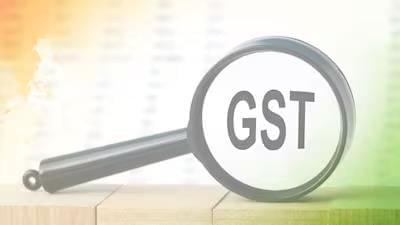
Why in News?
The Group of Ministers (GoM) on Rate Rationalisation has approved a proposal from the Centre to simplify the Goods and Services Tax (GST) into a two-rate structure. This recommendation is set to be presented to the GST Council for final approval.
Key Takeaways
- The GST, launched on July 1, 2017, is a comprehensive, multi-stage, destination-based indirect tax on goods and services.
- The current GST structure consists of five slabs: 0%, 5%, 12%, 18%, and 28%, with additional cess on luxury and sin goods.
Additional Details
- Objectives of GST: The GST aims to establish One Nation–One Tax, reduce cascading taxation, simplify compliance, and expand the tax base.
- Current Exemptions: Essential goods such as food, medicines, and education items fall under the 0% slab. Notably, petroleum, alcohol, and electricity are excluded from GST.
- Proposed Changes: The new structure will remove the 12% and 28% slabs, retaining only the 5% and 18% slabs. Approximately 99% of items currently in the 12% category will shift to the 5% slab, while 90% of items in the 28% category will move to the 18% slab. A new 40% rate will be introduced for demerit goods like tobacco and luxury cars, with the compensation cess on 28% items being eliminated.
- Implementation Timeline: The new structure is expected to be implemented by October 2025, coinciding with Diwali.
The proposed two-rate GST structure aims to simplify tax compliance and improve transparency. However, some states, including Kerala, have expressed concerns about potential revenue loss and have requested a compensation mechanism to address these issues.
UPSC 2018 Question: Consider the following items:
- 1. Cereal grains hulled
- 2. Chicken eggs cooked
- 3. Fish processed and canned
- 4. Newspapers containing advertising material
Which of the above items is/are exempted under GST? Options: (a) 1 only (b) 2 and 3 only (c) 1, 2 and 4 only *(d) 1, 2, 3 and 4
GS3/Economy
India’s Economic Equilibrium
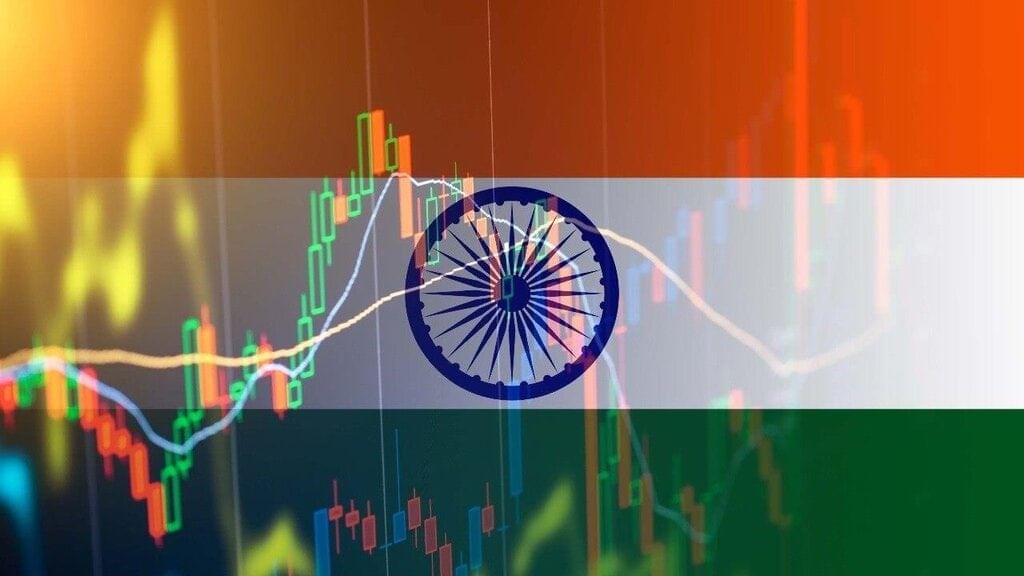
Why in News?
India’s Finance Ministry has recently characterized the economy as being in a "Goldilocks situation," marked by moderate growth, low inflation, and favorable monetary conditions. Analysts have noted a strong GDP growth of 7.6%, peak interest rates, and stable corporate earnings. The country concluded FY2024 as a $3.6 trillion economy, suggesting optimism for 2025. However, experienced economists warn that this seemingly positive picture conceals deeper structural imbalances, rendering the perceived equilibrium more fragile than it appears.
Key Takeaways
- Inflation and stagnant wage growth challenge the "Goldilocks" narrative.
- Income inequality and fiscal pressures question the validity of the "Goldilocks" claim.
- Underlying economic fragilities extend beyond the "Goldilocks" illusion.
Additional Details
- Inflation Dynamics: Headline CPI inflation decreased from 4.8% in May 2024 to 2.82% by May 2025; however, food inflation remained problematic, with the Consumer Food Price Index (CFPI) reaching 10.87% in October 2024, significantly outpacing general inflation.
- Erosion of Real Wages: In 2023, an average nominal salary increase of 9.2% led to only a 2.5% real wage growth. In 2020, real wages even fell by 0.4%, despite nominal growth. Projections for 2025 indicate that real wage growth will be halved by inflation, further straining household budgets.
- Silent Squeeze on Households: Rising inflation diminishes the value of salary increases, leading to a decline in quality of life for many families, with increased financial uncertainty.
- Income Inequality: The decline in the Gini coefficient from 0.489 in AY13 to a projected 0.402 in AY23 reflects improvements limited to the formal sector, while the vast informal workforce remains excluded.
- Fiscal Pressures: The government aims to reduce the fiscal deficit from 6.4% in 2022-23 to 4.4% in 2025-26, but high deficits necessitate significant borrowing, potentially hindering private investment and economic growth.
In conclusion, while India’s economic indicators suggest a stable environment, the reality encompasses significant challenges, including volatile food inflation, stagnant real wages, persistent income inequality, and constrained fiscal space. Addressing these systemic issues is essential for achieving true economic equilibrium that benefits all segments of society.
GS3/Economy
Pradhan Mantri Viksit Bharat Rozgar Yojana
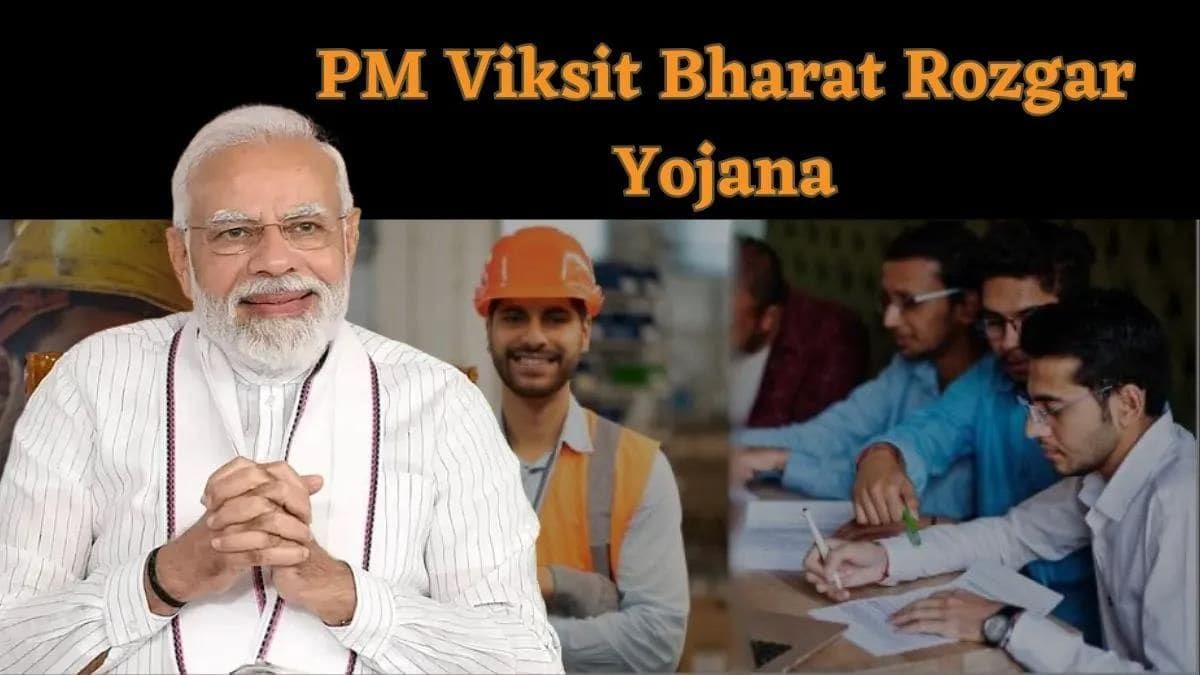
Why in News?
The Prime Minister has recently introduced the Pradhan Mantri Viksit Bharat Rozgar Yojana, aimed at enhancing formal job creation through direct financial incentives for both employees and employers.
Key Takeaways
- The scheme aims to create over 3.5 crore jobs in two years.
- It offers direct cash incentives to first-time employees and employers.
Additional Details
- Part A – Support to First-Time Employees:
- This component targets first-time employees registered with the EPFO.
- Eligible employees will receive a one-month EPF wage up to Rs 15,000 in two installments.
- Employees with a salary of up to Rs 1 lakh can qualify for these incentives.
- The first installment is paid after 6 months of service, while the second installment is given after 12 months of service and completion of a financial literacy program.
- A portion of the incentive will be deposited in a savings account, promoting the habit of saving.
- Part B – Incentives for Employers:
- This segment encourages the creation of additional jobs across all sectors, particularly in manufacturing.
- Employers can receive incentives of up to Rs 3000 per month for each new employee with a salary of up to Rs 1 lakh, sustained for at least six months.
- Incentives in the manufacturing sector may extend into the 3rd and 4th years as well.
- Incentive Payment Mechanism:
- Payments to first-time employees under Part A will be made via Direct Benefit Transfer (DBT) using the Aadhar Bridge Payment System (ABPS).
- Employers will receive payments directly into their PAN-linked accounts.
This scheme is expected to formalize the workforce in the country, enhancing social security coverage for millions of young individuals.
GS3/Economy
The Coastal Shipping Bill, 2024: A Legislative Milestone for Maritime Growth
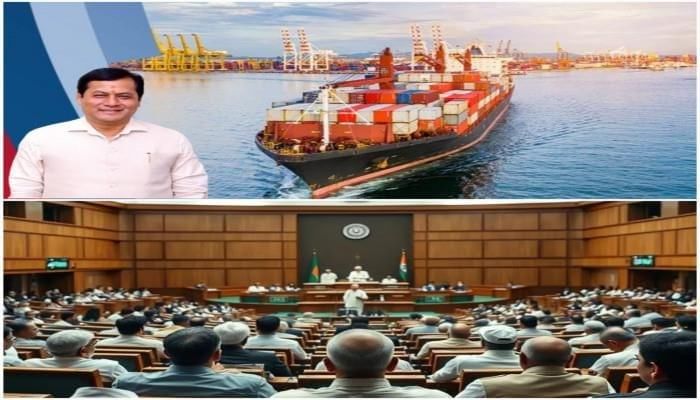
Why in News?
The Coastal Shipping Bill, 2024, which replaces Part XIV of the Merchant Shipping Act, 1958, is a pivotal legislative reform aimed at modernizing and streamlining India's coastal trade. This initiative is integral to the government's vision for a “Viksit Bharat” and “Aatmanirbhar Bharat,” targeting the vast potential of India's coastline by providing a dedicated legal framework that enhances coastal trade, reduces logistics costs, and promotes sustainable transportation.
Key Takeaways
- The Bill repeals outdated provisions of the Merchant Shipping Act, 1958.
- Coastal cargo movement has significantly increased, but regulatory challenges remain.
- It aligns with national initiatives like PM Gati Shakti and the Sagarmala Programme.
Additional Details
- Expanded Definition of Coastal Trade: Previously limited to the carriage of goods and passengers, now includes services such as exploration, research, and commercial activities, with the exclusion of fishing.
- Licensing Framework: - Indian-owned vessels: Exempted for coastal trade.
- Foreign/chartered vessels: License required from DG Shipping.
- OCI-chartered vessels outside India: No license needed. - Strategic Planning Mandate: A National Coastal and Inland Shipping Strategic Plan must be created within 2 years and reviewed biennially, promoting cooperative federalism.
- National Database for Coastal Shipping: Designed for real-time tracking and data-driven policymaking, aiding investors and infrastructure planning.
- Modernized Penalties and Decriminalisation: Aims to create a forward-looking, inclusive framework aligned with global standards.
The Coastal Shipping Bill, 2024, is a landmark step towards establishing a seamless and efficient maritime ecosystem in India. By modernizing regulations and promoting domestic industry, it sets the stage for a future-ready logistics network that supports the nation’s economic and strategic objectives.
GS3/Economy
Digital Payments Index (DPI)

Why in News?
As reported by the Reserve Bank of India (RBI), digital payments experienced a significant increase of 12.6% year-on-year as of March 31, 2024, according to the RBI's Digital Payments Index (DPI).
Key Takeaways
- The DPI was launched by the RBI in January 2021.
- It measures the extent of digital payment adoption across India.
- The base period for the index is March 2018, with an index value set at 100.
- The index is released semi-annually, with a 4-month lag.
- The main objective is to track the usage, infrastructure, and growth of digital payments in India.
Additional Details
- Key Parameters:The DPI evaluates various aspects of digital payments, including:
- Payment Enablers – 25%
- Payment Infrastructure – Demand Side – 10%
- Payment Infrastructure – Supply Side – 15%
- Payment Performance – 45%
- Consumer Centricity – 5%
- The DPI has shown a remarkable growth trend, increasing nearly 5 times from 100 in March 2018 to 493.22 in March 2025.
- This growth reflects the rapid adoption of digital payments driven by the expansion of platforms like Unified Payments Interface (UPI), mobile wallets, and QR code infrastructure.
In summary, the Digital Payments Index highlights India's rapid progress in adopting digital payment methods, showcasing the increasing infrastructure and user engagement in this sector.
GS3/Economy
BioE3 Policy - India’s Push for Biomanufacturing Hubs
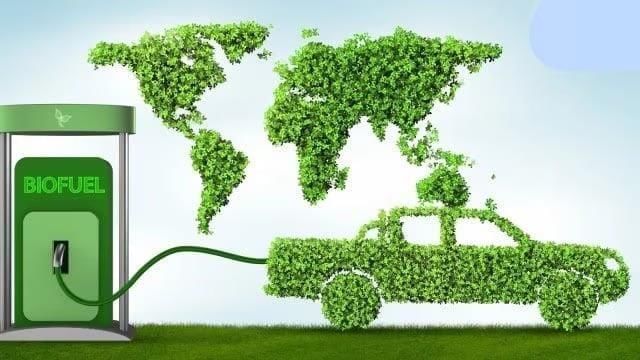
Why in News?
India is significantly reliant on imports for active pharmaceutical ingredients (APIs), fermentation-based drugs, enzymes for biofuels, and biofertilizer reagents. Following the Covid-19 pandemic, the Indian government has intensified efforts to boost domestic manufacturing through initiatives like the Production Linked Incentive (PLI) scheme. The BioE3 Policy, which stands for Biotechnology for Economy, Environment, and Employment, aims to establish 16 biomanufacturing hubs to enhance the bioeconomy and promote self-reliance, also known as Atmanirbharta.
Key Takeaways
- India’s bioeconomy contributes 4.25% to the national GDP.
- The BioE3 Policy was launched in August 2024 to promote advanced biomanufacturing technologies.
- Six biofoundries are already operational, supporting various biotechnological innovations.
Additional Details
- India’s Bioeconomy: The bioeconomy is an economic system that leverages renewable biological resources from plants, animals, and microorganisms to produce food, feed, energy, and bio-based products. As of December 2023, India's bioeconomy has expanded from $10 billion in 2014 to $151 billion in 2023, surpassing earlier projections.
- BioE3 Policy: This policy provides a framework for adopting advanced technologies and fostering high-performance biomanufacturing across various sectors. It aligns with India’s vision for Green Growth and the LiFE initiative focused on sustainability.
- Biomanufacturing hubs: The plan includes setting up 16 hubs with large fermenters, focusing on products such as fermentation-based medicines, bioproducts, and carbon capture technologies.
- The BioE3 policy aims to reduce India's dependency on imports in critical pharmaceutical and bio-based sectors, strengthen the bioeconomy, support the innovation-to-market pipeline, enhance collaboration between government and industry, and stimulate the biotechnology startup ecosystem.
- By integrating biofoundries with biomanufacturing hubs, India is poised to become a global leader in biotechnology-driven solutions for health, energy, and agriculture. Continued investment, collaboration, and supportive regulatory frameworks will be essential for realizing a self-reliant bioeconomy.
GS3/Economy
Overhauling India’s Vocational Education and Training (VET) System - A Pathway to Viksit Bharat
Why in News?
The Prime Minister's Independence Day address on August 15 emphasized the need for reforms aimed at demand-driven growth, recalibrating GST, and enhancing productivity through education and skill development. Despite having a significant demographic advantage, India grapples with a low-skilled workforce, making vocational education essential for improving employability and productivity.
Key Takeaways
- India has over 14,000 Industrial Training Institutes (ITIs) with 25 lakh sanctioned seats.
- Actual enrolment in ITIs was only around 12 lakh in 2022, indicating just 48% utilization of available seats.
- The employment rate for ITI graduates was only 63% in 2018, compared to 80-90% in countries with robust VET systems like Germany and Singapore.
- Only 4% of the workforce in India is formally trained, significantly lower than international standards.
Challenges in India’s VET System
- Late integration in education system: VET in India is introduced after high school, limiting hands-on training time and employability skills orientation.
- Lack of academic progression: There are no defined pathways from VET to higher education, and no credit transfers exist between systems.
- Quality issues: Curricula are outdated and misaligned with industry needs, with over one-third of ITI instructor positions vacant due to limited training capacity.
- Weak public-private partnerships (PPPs): Limited engagement of private sector employers and inadequate support from MSMEs due to capacity constraints.
Learning from International Best Practices
- Integration in education system: In countries like Germany, VET is blended with school education through a dual system involving paid apprenticeships.
- Academic progression: Singapore provides clear pathways from VET to universities, ensuring VET is recognized both at post-secondary and tertiary levels.
- Perception and quality: Countries with effective VET systems employ industry-led curricula, high-quality instructors, and regular feedback mechanisms.
- Public-private partnerships (PPPs): Governments support VET institutions, while employers contribute to apprenticeship funding and curriculum design.
Reforms Needed in India
- Early integration of VET: Implement the National Education Policy (NEP) 2020 recommendations for VET at the school level.
- Pathways to higher education: Accelerate the National Credit Framework for academic progression and credit transfers.
- Improve quality and relevance: Align training with local industry demands and expand National Skill Training Institutes (NSTIs).
- Strengthen PPPs: Scale up involvement of Private Training Partners and engage MSMEs through CSR funding.
- Increase funding: India allocates only 3% of the education budget to VET, compared to 10-13% in Germany, Singapore, and Canada.
Recent Government Schemes
- Employment Linked Incentive (ELI) scheme: Offers incentives for employers and first-time EPFO-registered workers, although lacking skilling components.
- PM Internship Scheme: Provides one-year placements to youth in top companies but does not ensure pathways to permanent jobs.
- ITI Upgradation Scheme: Focuses on modernizing government ITIs in partnership with the industry, but does not guarantee quality training.
To effectively transform vocational education and training in India, a systemic overhaul is essential. This transformation should aim to make VET more attractive and effective, linking it with formal employment and opportunities for upward mobility. Ultimately, the goal is to turn VET into a pathway to quality jobs, crucial for realizing the vision of Viksit Bharat by 2047.
GS3/Economy
Pradhan Mantri Jan Dhan Yojana (PMJDY) - A Global Model for Financial Inclusion
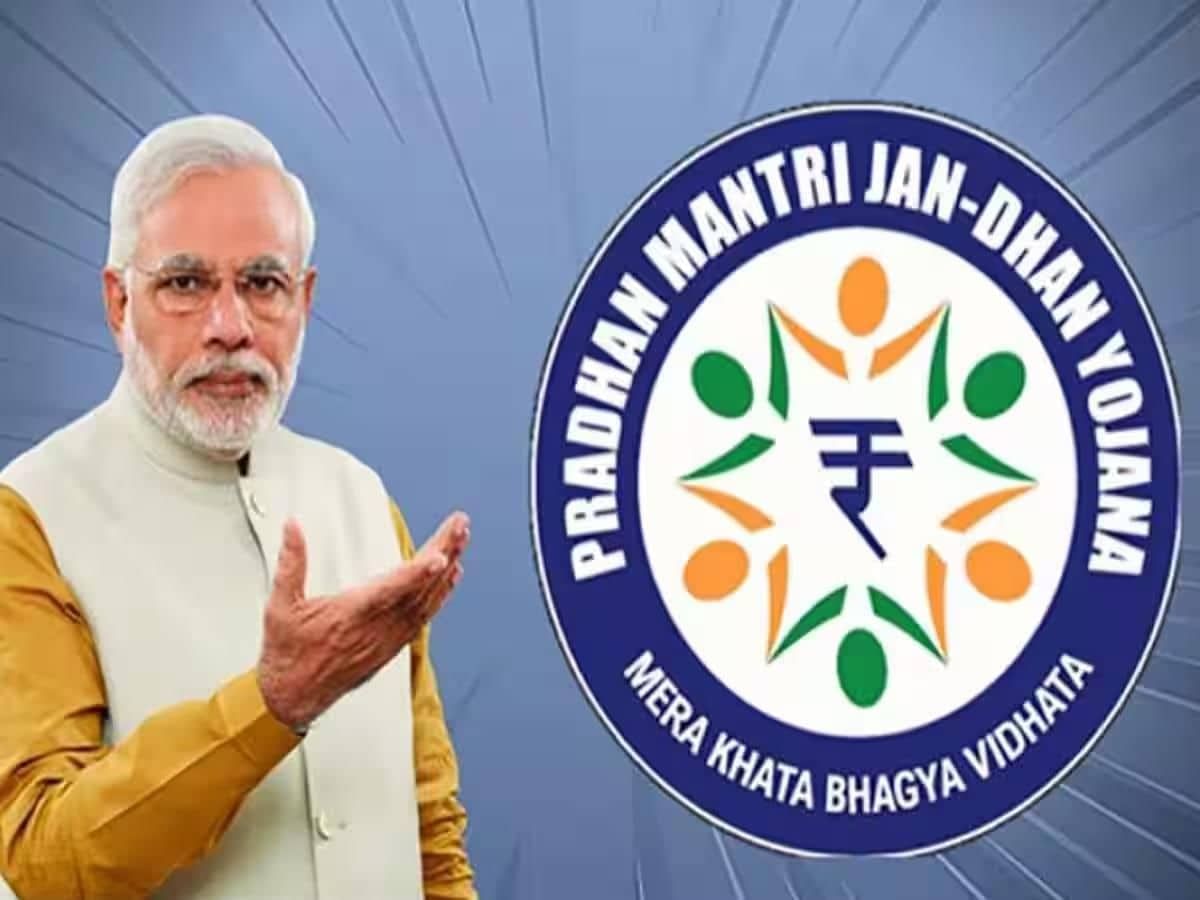
Why in News?
The Pradhan Mantri Jan Dhan Yojana (PMJDY) is crucial for empowering individuals, driving economic growth, alleviating poverty, and fostering social equality. Launched on 28 August 2014, this initiative by the Indian government aims to provide universal access to banking services, focusing primarily on marginalized sections of society.
Key Takeaways
- PMJDY addresses financial inclusion by providing banking services to previously unbanked households.
- Significant achievements include increased bank account ownership and financial literacy among citizens.
Additional Details
- Genesis of PMJDY: At its inception, around 7.5 crore households in India lacked bank accounts. The scheme's primary goal was to ensure universal access to banking services, enabling every household to engage in the formal financial system.
- Achievements:
- Before PMJDY, only 59% of households and 35% of adults had bank accounts; by 2024, nearly 100% of households and over 90% of adults have bank accounts.
- According to the World Bank's Findex report, account ownership among individuals aged 15 and older rose to 89% in 2024.
- The NSS survey of 2022-2023 indicates that 94.65% of adults now own a bank account.
- Over 56.2 crore new accounts have been opened since 2015, with women holding 56% of these accounts, demonstrating a strong focus on gender inclusion.
- The total balance in PMJDY accounts reached Rs 2.68 lakh crore, a 17-fold increase since 2015.
- The banking network has expanded, with over 16.2 lakh bank mitras providing services in remote areas. Currently, 99.9% of villages have banking outlets within a 5 km radius.
- Role in Welfare and Crisis Management: PMJDY accounts have streamlined the Direct Benefit Transfer (DBT) process, ensuring that subsidies and relief payments directly reach beneficiaries. During events like demonetization and the Covid crisis, these accounts enabled swift financial support.
- Financial Products and Digital Integration: The scheme has facilitated digital transactions and issued over 38.7 crore RuPay cards. PMJDY accounts serve multiple purposes, including receiving DBT, savings, and providing access to micro-insurance and investment products through schemes like PMJJBY and PMSBY.
- Future Prospects: Innovations in artificial intelligence and natural language processing could enhance transaction ease without requiring smartphones or internet access. The government is also initiating a financial inclusion saturation drive to update KYC details, facilitate new account openings, promote micro-insurance and pension schemes, and reduce inactive accounts under PMJDY.
In conclusion, PMJDY stands as the world's largest financial inclusion program, exemplifying inclusive governance and recognized as a global model for universal financial inclusion. As it approaches its 12th year, the focus must shift from mere account creation to enhancing account activity, financial literacy, and access to diverse financial products like insurance, credit, and pensions. Leveraging digital innovations and increasing outreach in rural and unorganized sectors can further transform PMJDY into a catalyst for sustainable economic growth.
GS3/Economy
What is PM SVANidhi Yojana?
Why in News?
The Prime Minister has recently praised the achievements of the PM SVANidhi Yojana, emphasizing its role in empowering street vendors across the nation.
Key Takeaways
- Launched on June 1, 2020, by the Ministry of Housing and Urban Affairs (MoHUA).
- Aimed at providing affordable working capital loans to street vendors affected by the Covid-19 pandemic.
- Implementation managed by the Small Industries Development Bank of India (SIDBI).
Additional Details
- Loan Amount: Vendors can access a working capital loan of up to Rs. 10,000, to be repaid in monthly installments over a tenure of one year.
- Interest Subsidy: On timely or early repayment, an interest subsidy of 7% per annum is credited to beneficiaries' accounts through Direct Benefit Transfer on a quarterly basis.
- No penalties are imposed for early repayment of the loan, encouraging financial discipline.
- The scheme promotes digital transactions by offering cashback incentives of up to Rs. 100 per month.
- Vendors can also benefit from the escalation of their credit limit upon timely repayments.
- Usage of Loan: The loan can be used for various purposes related to street vending, such as purchasing raw materials, paying rent, or acquiring equipment.
Eligibility Criteria
- Street vendors must possess a Certificate of Vending or Identity Card issued by Urban Local Bodies (ULBs).
- Vendors identified in the survey but without a Certificate of Vending/Identity Card are also eligible.
- Vendors who were not included in the ULB-led identification survey or have started vending afterward can apply if they have a Letter of Recommendation (LoR) from the ULB/Town Vending Committee (TVC).
- Street vendors from peri-urban or rural areas vending within ULB limits can also qualify with the appropriate LoR.
The PM SVANidhi Yojana is a significant initiative aimed at supporting street vendors, aiding them in resuming their businesses and achieving self-reliance in the aftermath of the pandemic.
GS3/Economy
Rising Disposable Income of Indian Households in 2025
Why in News?
Chief Economic Advisor V. Anantha Nageswaran has announced that the disposable income of Indian households is expected to rise significantly in 2025 compared to the previous year. This increase is largely attributed to easing inflation and recent tax cuts, along with anticipated further reductions. The rise in disposable income is considered a positive indicator for household spending and overall economic growth.
Key Takeaways
- The rise in disposable income is driven by lower inflation and tax cuts.
- Increased disposable income positively impacts household spending and economic growth.
- Urban and rural demand trends show varied patterns in consumption.
Additional Details
- Understanding Disposable Income: Disposable income refers to the amount of money households have after paying taxes. It is the net income available for spending and saving. In simple terms, it represents the cash available for daily expenses such as food, rent, healthcare, and education.
- Formula: Disposable Income = Total Income – Taxes
- Impact of Inflation: Even if disposable income remains unchanged, high inflation can diminish its real value. For instance, if disposable income is ₹50,000, but inflation rises, that same ₹50,000 will purchase fewer goods and services. This results in a lower real disposable income, leading households to cut back on non-essential spending, which can slow down demand and economic growth.
- High inflation can also hinder savings, as more disposable income is allocated to essential expenses, thereby reducing long-term investments and financial security.
- Overall, a higher disposable income is crucial as it boosts consumer spending, improves living standards, supports savings and investments, encourages business growth, enhances economic resilience, and drives economic growth.
The recent announcements from CEA regarding the projected increase in disposable income in 2025 are as follows:
- Attributable factors include lower inflation and direct tax cuts from the 2025 Union Budget.
- Expected GST rate rationalization is also anticipated to enhance household spending and support economic growth.
- India's GDP growth for the April–June 2025 quarter reached 7.8%, marking the highest growth in five quarters and exceeding expectations. Despite concerns regarding weak urban demand expressed at the RBI's August MPC meeting, the CEA asserts that urban consumption may have been underestimated due to reliance on traditional surveys. Evidence from UPI merchant payment data indicates strong growth in digital transactions across various categories.
- Rural demand has shown resilience, aided by favorable monsoon conditions, while urban consumption trends are mixed—strong in sectors like hospitality and trade but softer in housing and consumer durable loans.
- From August 27, 2025, tariffs on Indian goods entering the US market have doubled to 50% (25% duty plus a 25% penalty linked to India's Russian oil imports). This poses risks for labor-intensive export sectors such as textiles, potentially affecting jobs, wages, consumption, and dampening private investment. Economists caution about a possible negative domino effect on economic growth.
- The government's policy response includes a two-pronged strategy: boosting domestic consumption through income tax cuts (with an estimated revenue loss of ₹1 lakh crore) and GST rationalization to lower inflation, while also exploring alternatives to US markets and enhancing domestic resilience to reduce vulnerability to external shocks.
GS3/Economy
Trumponomics: Defying the Doom Predictions—for Now
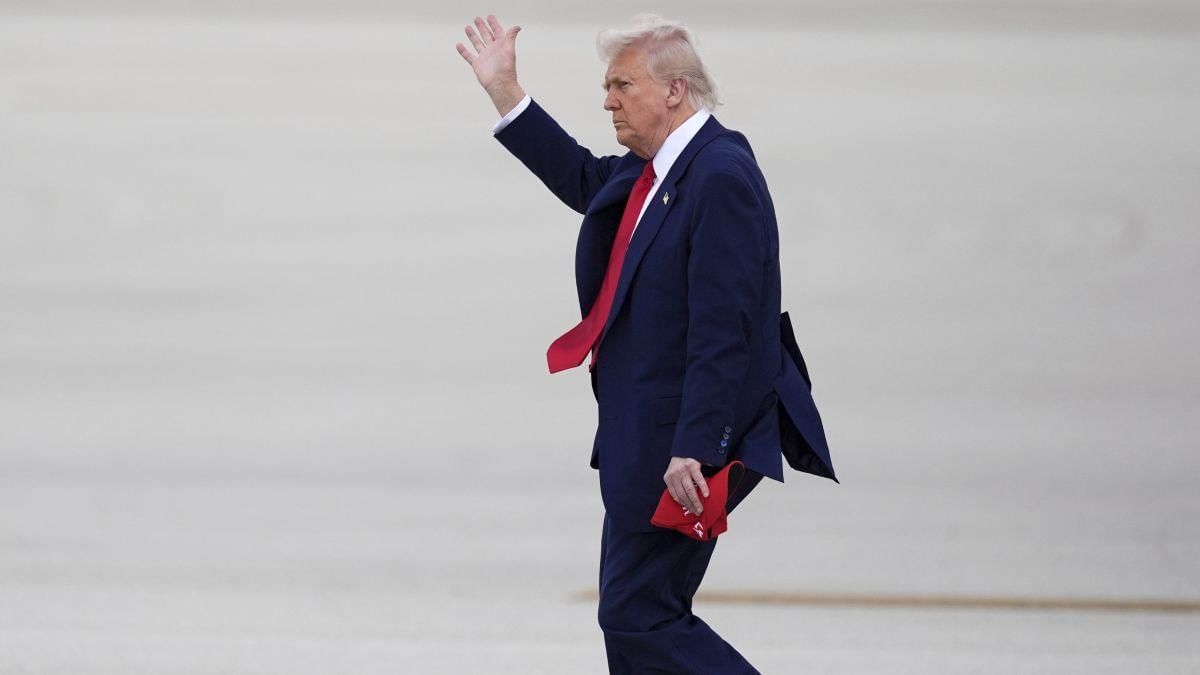 Why in News?
Why in News?
Six months after US President Donald Trump’s significant tariff increases, the anticipated economic downturn has not occurred. The S&P 500 index has risen by approximately 10% since "Liberation Day," and although the dollar initially weakened, it has recently regained strength. Despite imposing tariffs on nearly all major trading partners, consumer prices in the US have not shown a substantial increase. This raises an important question: will these tariffs result in a one-time price hike or lead to ongoing inflationary pressures?
Key Takeaways
- The US has implemented significant tariffs on nearly all trading partners, including 15% on the EU, Japan, and South Korea, and 35-50% on Canada, Switzerland, Brazil, and India.
- Current average tariffs could range between 15-20%, which is inherently inflationary, even if some costs are absorbed by retailers.
- The US economy has shown resilience due to a strong foundation of over 2% GDP growth, near full employment, and low inflation prior to the tariffs.
- Stock markets have been buoyed by growth in the artificial intelligence sector, positively impacting tech company earnings.
Additional Details
- Tariff Impact: Importers increased shipments before tariffs took effect, meaning many goods currently available are not subject to the higher duties yet.
- Trump's frequent waivers and deadline extensions have postponed the full effects of the tariffs.
- Warning signs in the labor market indicate potential weaknesses, with non-farm payrolls rising only by 73,000 in July and previous months being revised downward.
- Despite stable inflation rates so far, higher import costs are expected to influence prices, potentially reducing consumer demand and hindering job growth.
In conclusion, while the US economy appears stable for the moment, the future remains uncertain as inflationary pressures from tariffs may begin to manifest, particularly with the upcoming holiday season. This could significantly affect voter sentiment before the midterm elections, leading to broader economic implications as the Federal Reserve navigates these challenges.
GS3/Economy
What is the Export Promotion Mission?
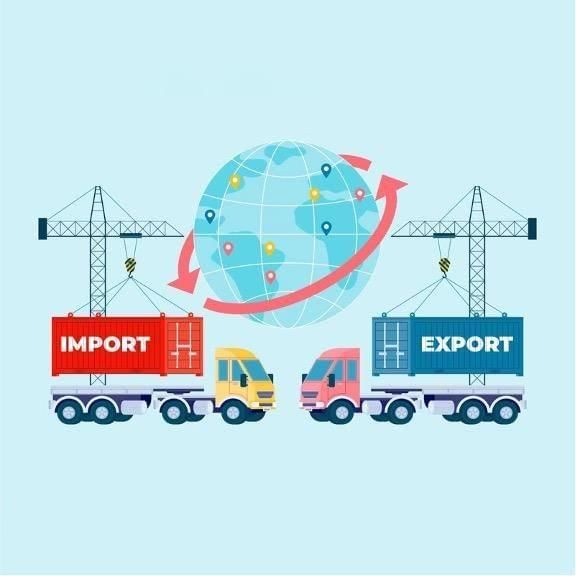 Why in News?
Why in News?
The government is contemplating support measures amounting to approximately Rs 25,000 crore for exporters as part of the Export Promotion Mission, which was announced in the Budget for the financial years 2025 to 2031.
Key Takeaways
- The Export Promotion Mission is a flagship initiative introduced in the Union Budget for 2025-26.
- The goal is to facilitate broad-based, inclusive, and sustainable export growth over a six-year period (FY 2025-31).
- This initiative will explore innovative approaches to tackle significant challenges faced by Indian exporters, particularly Micro, Small, and Medium Enterprises (MSMEs).
Additional Details
- Jointly Driven By: The initiative is being implemented collaboratively by the Ministries of Commerce and Industry, Micro, Small and Medium Enterprises, and Finance.
- Objectives: To enhance export competitiveness through improved access to export credit and assistance in overcoming non-tariff barriers in global markets.
- Lead Department: The Department of Commerce is the primary department overseeing this mission.
- The mission will be executed via two sub-schemes:
- Niryat Protsahan: Allocated over Rs 10,000 crore.
- Niryat Disha: Allocated over Rs 14,500 crore.
- Main Elements of Niryat Protsahan:
- Interest equalisation support exceeding Rs 5,000 crore over the six financial years (2025-2031).
- Support for alternative trade finance instruments.
- Introduction of a credit card specifically for e-commerce exporters.
- Other financing mechanisms to address liquidity challenges faced by exporters.
- Proposed Components of Niryat Disha:
- Support for export quality compliance (around Rs 4,000 crore).
- Overseas market development (over Rs 4,000 crore).
- Branding, export warehousing, and logistics.
- Capacity building to integrate more Indian enterprises into global value chains.
This initiative marks a significant step towards enhancing India's export capabilities and addressing the challenges faced by exporters, particularly MSMEs, in the global marketplace.
GS3/Economy
India's First EMI-Based Credit Card
Why in News?
BharatPe and Unity Small Finance Bank have recently unveiled the Unity Bank BharatPe Credit Card, marking a significant innovation as India's first credit card that allows users to opt for equated monthly instalments (EMIs) on their purchases.
Key Takeaways
- Launch of India’s first EMI-driven credit card on the RuPay network.
- Partnership between Unity Bank and BharatPe, developed with NPCI.
- Availability for both salaried and self-employed individuals.
Additional Details
- Auto-EMI Conversion: Purchases can be split into EMIs for up to 12 months, providing users with flexible repayment options.
- Zero Fees: The card comes with no joining, annual, or foreclosure fees, making it a lifetime free card.
- UPI Integration: The credit card can be linked to the Unified Payments Interface, ensuring ease of payments at various merchants across the country.
- Reward Program: Users can earn a flat 2% reward on EMI transactions, which can be redeemed via the BharatPe app.
- Premium Benefits: The card offers complimentary access to domestic and international lounges, along with preventive health checkups.
- Digital Onboarding: Users can complete the application process, including KYC and activation, seamlessly through the BharatPe app.
This innovative credit card aims to enhance the financial flexibility of consumers in India, making it easier for them to manage their expenses through EMI options while enjoying various benefits.
|
108 videos|431 docs|128 tests
|
FAQs on Economic Development: August 2025 UPSC Current Affairs - Indian Economy for UPSC CSE
| 1. What is the significance of India's Herbicide Revolution in agricultural practices? |  |
| 2. How does the Reserve Bank of India balance growth optimism with inflationary caution in its monetary policy? |  |
| 3. What are the main factors that contributed to India's recent S&P upgrade? |  |
| 4. What is Minimum Public Shareholding (MPS), and why is it important for Indian companies? |  |
| 5. How do GST reforms contribute to long-term revenue gains for India? |  |





















